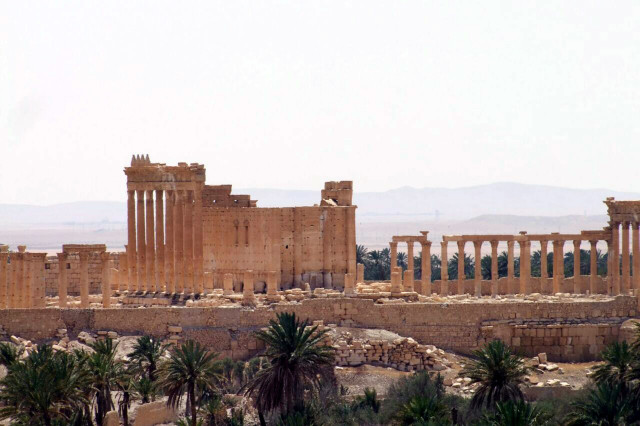Rethinking the U.S. Strategy Against IS in Syria
David Apgar – The Globalist
For its strategy on Islamic State (IS) to work, the United States has to sacrifice what was long considered a sacred cow — the integrity of Iraq. But success in that endeavor requires the sacrifice of another sacred cow – the supposed U.S. reluctance to recruit mercenaries …
There are nevertheless two groups of non-Syrian Sunnis with motivations of their own to resist the (literal) dismemberment of Syria.
Sunni Chechens are dismayed at the support their cynical government in Moscow has given to the genocidal campaign of the Assad government in Syria against its Sunni majority. Many would jump at the opportunity to staunch the bloodshed with the U.S. Air Force at their back.
Conservative Sunnis from the poorer parts of Saudi Arabia are dismayed at the support their government gave to Egypt’s secular counter-revolution. The coup in Egypt crushed hope in the Middle East, even as it crushed the Muslim Brotherhood, which speaks in whispers for many in Saudi Arabia who are not princelings of the royal family.
This photo released on May 17, 2015, by the Syrian official news agency SANA, shows the general view of the ancient Roman city of Palmyra, Syria, where Islamic State militants entered the famed archeological city a day earlier. (SANA via AP)
The Ruins of Empire in the Middle East
Robert D. Kaplan – Foreign Policy
The meltdown we see in the Arab world today, with chaos in parts of North Africa, the Arabian Peninsula, and the Levant, is really about the final end of imperialism …
First, Middle Eastern chaos demonstrates that the region has still not found a solution to the collapse of the Ottoman Empire after World War I …
The implosion of Iraq in the wake of the toppling of Saddam Hussein, the implosion of Syria in the wake of the Arab Spring, and the rise of the Islamic State has brought to an end the borders erected by European imperialism, British and French, in the Levant …
The demonstrably hands-off approach to these developments by President Barack Obama manifests the end of America’s great power role in organizing and stabilizing the region.
What’s Wrong with Robert Kaplan’s Nostalgia for Empire
Juan Cole – The Nation
Journalist Robert D. Kaplan thinks that what is wrong with the Middle East is a lack of imperialism, and he urges that it be brought back. It is how, he says, most of the world has been ruled by “default.” This argument is so ahistorical and wrong-headed that it takes the breath away …
“Imperialism” is an imprecise term. Kaplan is trying to sweep up different kinds of empire under one rubric. Until the early twentieth century, most people in the Middle East admittedly accepted the Ottoman Empire, which was Muslim-ruled and made minimal economic demands on them while offering minimal governance. But it was precisely at that point when the Ottomans began building railroads to deliver garrisons to the provinces and introducing modern, more intrusive bureaucracy that they began facing opposition from local elites …
The Middle East east of the Suez was not ruled by European capitalist imperialism for any substantial length of time, and locals kicked the imperialists out after World War II where they had not already done so before. Britain only had Iraq from 1917 until 1932; it never really controlled the country…
President Barack Obama, center, waves as he stands with, from left, Abu Dhabi Crown Prince Sheik Mohammed bin Zayed Al Nahyan; Bahrain Crown Prince Prince Salman bin Hamad Al-Khalif; Deputy Prime Minister of Oman, Sayyid Fahad Bin Mahmood Al Said; Kuwait’s Emir Sheik Sabah Al-Ahmad Al-Jaber Al-Sabah; Qatar’s Emir Sheik Tamim bin Hamad Al-Thani; Saudi Arabia Crown Prince Mohammed bin Nayef; and Secretary General of the Gulf Cooperation Council, Abdul Latif Bin Rashid Al Zayani of Bahrain on May 14, 2015. (AP/Pablo Martinez Monsivais)
Why the New Arab Military Pact Isn’t Worth The Ink It Was Written In
Bobby Ghosh – Defense One
It sounds like plain common sense: a joint Arab military force to intervene in regional crises. Alas, the plan, drawn up yesterday by the Arab world’s military chiefs, will go no farther than the Cairo conference room where it was concocted …
One already exists: the 40,000-strong Gulf Cooperation Council’s “Peninsula Shield,” armed with the best weapons petrodollars can buy. It has never been deployed in any frontline military operation (a small police action in Bahrain in 2011 doesn’t count) …
For another, as I’ve written before, Arab militaries are designed to protect regimes from mostly unarmed pro-democracy activists, not to fight actual wars.
“VOA will present the policies of the United States clearly and effectively, and will also present responsible discussion and opinion on these policies.” — VOA Charter
The Pull of Middle East Turmoil on Obama
Posted May 27th, 2015 at 3:33 pm (UTC-5)
Comments are closed



